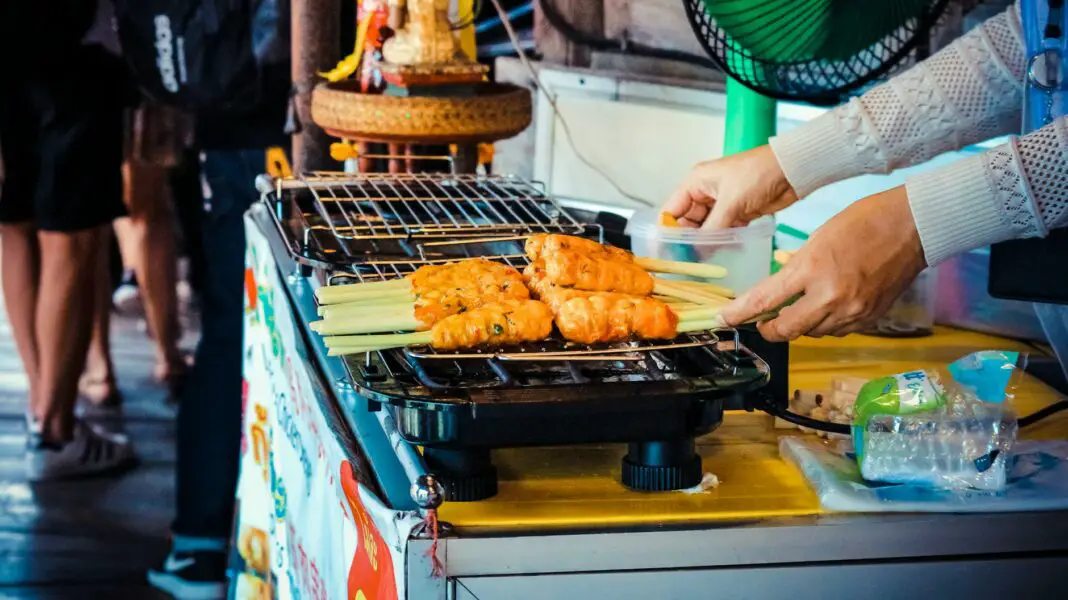If you are dreaming of a getaway filled with lush landscapes, vibrant culture, and overwhelmingly delicious food, a trip to Thailand is your ticket to paradise. Known for its breathtaking scenery and rich history, Thailand offers an adventure that every traveler should experience at least once. However, what truly sets this tropical haven apart is its tantalizing cuisine. The secret recipes and cooking techniques that make Thai food so irresistible are deeply rooted in tradition, using fresh ingredients and a perfect balance of flavors that create unforgettable dishes. In this blog post, we’ll explore Thailand’s wonders and unveil the secrets behind its famed cuisine.
From the bustling streets of Bangkok to the serene beaches of Phuket, Thailand is a treasure trove of extraordinary experiences that go beyond the eye can see. As you embark on this flavorful journey, you’ll discover the nation’s culinary history, the fresh ingredients that play a starring role in every dish, and some secret recipes that make Thai cuisine world-renowned. Whether you are planning your next travel destination or seeking to unleash your inner chef, this guide will provide you with the insights and inspiration needed to dive into the heart of Thailand’s unforgettable food culture.
The essence of Thai cuisine springs from the country’s rich cultural tapestry, a culmination of historic influences and diverse traditions that span centuries. Every meal in Thailand tells a story, blending flavors from various regions influenced by neighboring countries and local customs. The harmony of sweet, sour, salty, and spicy flavors creates an unparalleled dining experience, enlivens the senses, and encapsulates the heart of the nation. The use of market-fresh ingredients and techniques passed down through generations showcases not only the culinary prowess that Thailand is famous for but also the enduring appreciation the Thai people have for their food culture.
Moreover, meals in Thailand are more than just feeding the body; they are a social affair that brings families and friends together. Street food vendors are a common sight, and eating at local markets allows visitors to dive deep into the authentic Thai dining experience. From humble food stalls to upscale restaurants, the variety of dishes on offer reflects the geographical and cultural diversity of the nation. Thus, understanding this context is crucial when embarking on a culinary adventure in Thailand, allowing travelers to appreciate the intricacies involved and savoring every bite while creating lasting memories.
At the heart of Thailand’s culinary brilliance lies an unwavering commitment to using fresh, local ingredients that elevate the flavor profile of every dish. The country’s tropical climate produces a bountiful harvest of herbs, spices, and vegetables that are integral to Thai cuisine. Ingredients such as lemongrass, galangal, kaffir lime leaves, and Thai basil react harmoniously, creating layers of flavors that dance across the palate. The use of fresh produce not only enhances taste but also contributes to the nutritional value of the food, making every meal a wholesome delight.
Often, these ingredients can be found in vibrant markets teeming with life. Observing local vendors expertly selecting the freshest produce can inspire culinary enthusiasts everywhere. Visiting local markets becomes more than just a shopping experience; it transforms into an immersive journey where one can learn about new ingredients and discover unique flavors. Take the opportunity to experiment with local herbs and vegetables while preparing your own meals at home, reviving authentic tastes and expanding your culinary repertoire while allowing a taste of Thailand to illuminate your kitchen.
What makes Thai cuisine truly unique are its secret recipes that have been passed down through generations; they embody the colorful culture and rich history inherent in each dish. One such secret involves the famed Pad Thai, a beloved street food that amalgamates rice noodles with a perfect balance of tamarind paste, fish sauce, garlic, and dried shrimp. Elements like crispy peanuts and fresh lime amplify its flavors, making every forkful an explosion of tastes that leave diners yearning for more.
Another classic dish is Tom Yum Goong, a spicy shrimp soup renowned for its fragrant blend of lemongrass, galangal, and Kaffir lime leaves. This dish encapsulates the essence of Thai cuisine, demonstrating how fresh, aromatic ingredients can transform a simple broth into a culinary masterpiece. The delicate art of balancing flavors is a closely guarded secret among chefs, showcasing their inherent understanding of flavor layering, creating dishes that not only satiate hunger but also tantalize the soul. Such recipes remain a culinary enigma; mastering them opens gateways to various regional styles while reaffirming the complexities and depth of Thai food.
To fully immerse oneself in Thai cuisine is to savor the remarkable selection of dishes that the nation offers. For starters, Som Tum, or green papaya salad, is a must-try with its crispy textures and the perfect balance of lime, chili, and fermented fish sauce. This vibrant salad awakens the senses, providing a refreshing contrast to hot, humid afternoons. Additionally, Massaman Curry, infused with Indian spices, offers a unique twist that defines the regional diversity present in Thai food. Its nutty flavor and hearty ingredients create a wholesome, comforting dish that tantalizes palates.
Do not forget to indulge in Mango Sticky Rice, a heavenly dessert that marries sweet mangoes with creamy coconut sticky rice, drizzled with coconut sauce and topped with a sprinkle of toasted sesame seeds. Each bite is a celebration of sweetness and richness, making it a delightful finale to any meal. Emphasizing the importance of tasting various dishes throughout Thailand ensures a genuine connection with its culinary landscape, allowing you to appreciate not just the flavors but also the cultural significance behind them.
Embracing the art of Thai cooking at home can be incredibly rewarding, and there are a few essential tips to consider. First, invest in high-quality ingredients, as the foundation of any authentic dish hinges on the freshness and quality of the components used. Then, do not shy away from exploring local Asian markets; many offer fresh produce, herbs, and spices that may not be readily available in traditional grocery stores.
Learning to balance flavors is also crucial. Creating a perfect Thai dish involves testing and tasting to hone in on the ideal combination of sweet, spicy, salty, and sour flavors. Try your hand at crafting homemade Thai dishes, such as Pad Kee Mao or Green Curry, to elevate your cooking skills. Signing up for a local Thai cooking class can provide further insight and hands-on experience while offering a fun way to connect with fellow food enthusiasts. By immersing yourself in the cooking process, you will create flavorful dishes that transport your family and friends to Thailand, all from the comfort of your own home.
As you plan your journey through Thailand or prepare to recreate its incredible cuisine in your own kitchen, remember that the country’s culinary mastery is rooted in its rich culture and history. Each bite embodies stories and traditions that echo through generations, captured within a bowl or on a plate distinct to the diverse regions of the country. By immersing yourself in Thai philosophy regarding food, you can elevate both your travel experience and your culinary practices, savoring each flavor as an opportunity to connect with the heart of Thailand. So, dig into this delightful world, and let the spices, herbs, and vibrant colors ignite your passion for discovering Thai cuisine without reservation.
What are some essential Thai ingredients to have at home for authentic cooking?
To recreate authentic Thai dishes, stock your pantry with essential ingredients like fish sauce, soy sauce, tamarind paste, coconut milk, and a range of fresh herbs such as basil, cilantro, and lemongrass.
How spicy is Thai food?
Thai cuisine ranges from mildly spicy to incredibly hot, depending on personal preference and the specific dish. The use of chili peppers can be adjusted to cater to individual tastes, making it accessible to a wide range of palates.
Where can I eat authentic Thai food in my area?
Research local Thai restaurants, food blogs, or community reviews online for recommendations on where to find genuine Thai cuisine. Additionally, exploring your local food markets may lead you to discover hidden culinary gems run by Thai chefs who offer authentic dishes.
What is a popular dessert in Thai cuisine?
Mango Sticky Rice is perhaps the most beloved Thai dessert, renowned for its combination of sweet, sticky rice, fresh mango slices, and a drizzle of coconut sauce—a true indulgence that exemplifies Thai culinary charm.
Image Credit: Pexels





